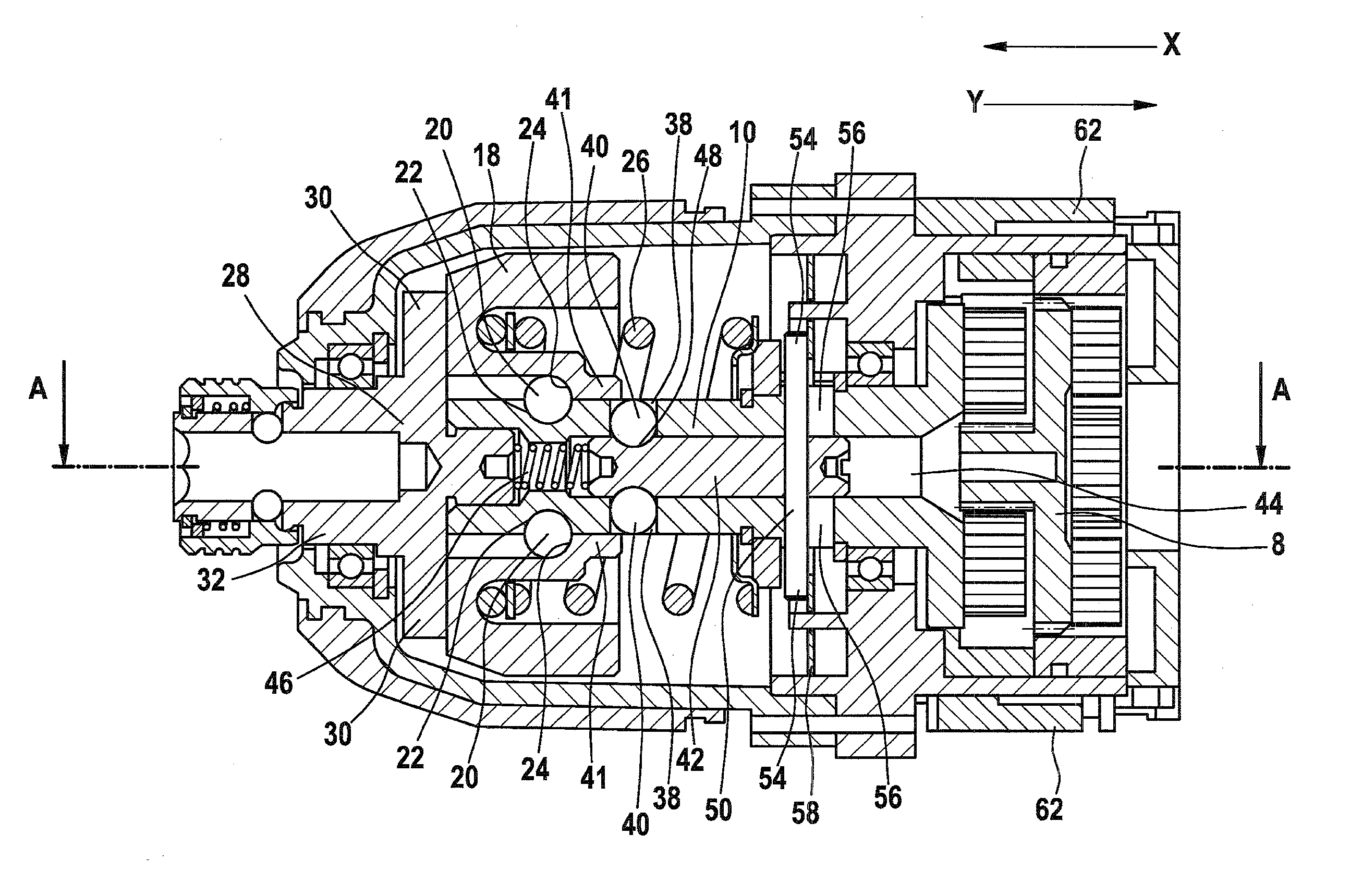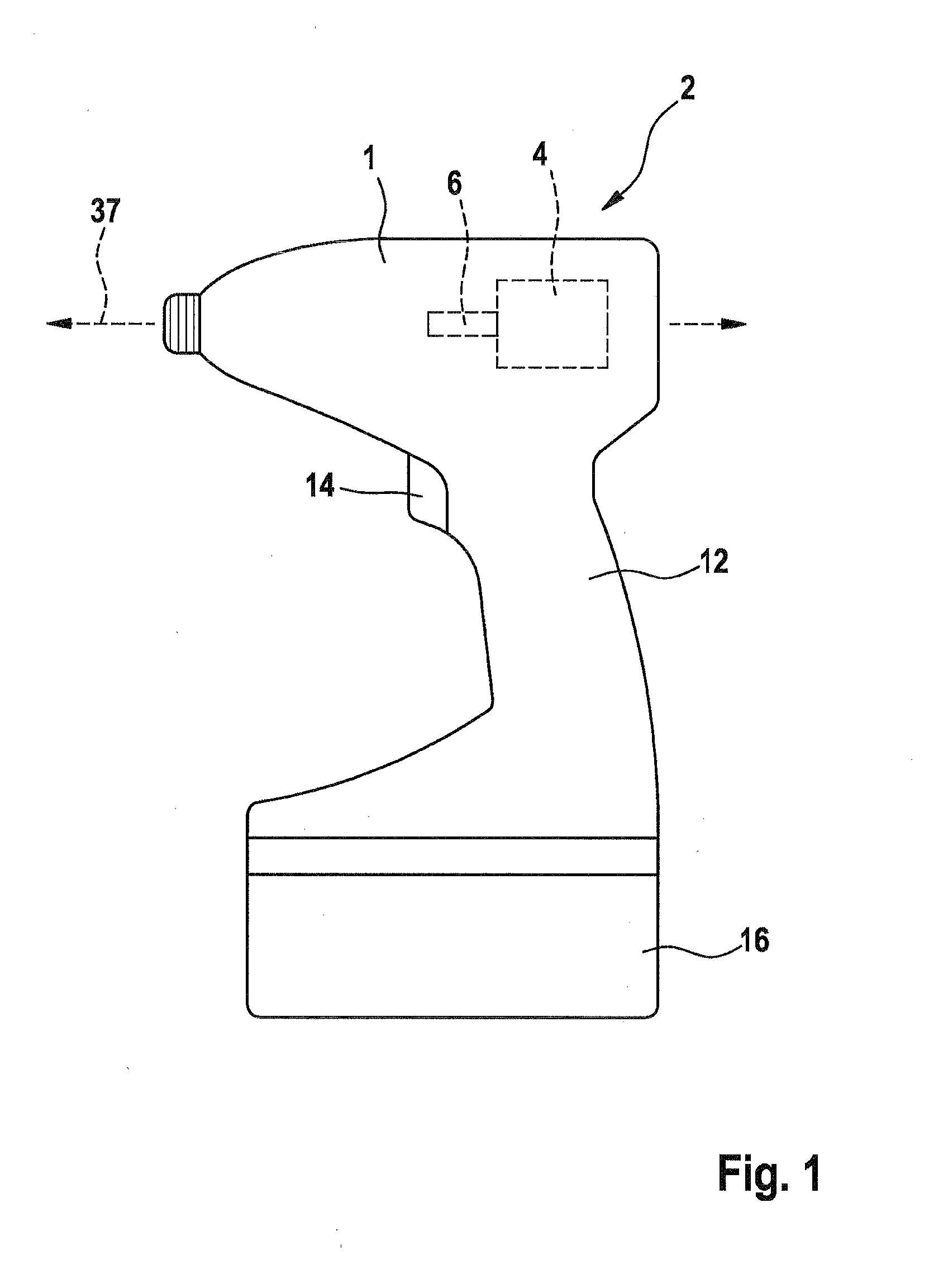Rotary power tool operable in either an impact mode or a drill mode
a rotary power tool and impact mode technology, applied in the field of impact drivers, can solve the problems of unfavorable drilling operations, and general undesirable effects of impact drivers, and achieve the effects of less additional weight of tools, less impact drivers, and compact overall housings for tools
- Summary
- Abstract
- Description
- Claims
- Application Information
AI Technical Summary
Benefits of technology
Problems solved by technology
Method used
Image
Examples
Embodiment Construction
[0022]An example of a rotary tool according to the present invention is illustrated in FIG. 1. Within a housing 1 of an impact driver 2 is a motor 4 and an associated motor shaft 6. Rotation of the motor shaft 6 is transduced via various step down planetary gears in a gearbox 8 to rotate a driveshaft 10. The tool is provided with a handle 12 and a trigger 14 so that it may be conveniently operated by a user. A battery 16 provides a DC power source but an AC power source is a standard alternative.
[0023]While still further modes are possible, the impact driver 2 may operate in at least two different modes: impact mode and drill mode. In impact mode, the tool operates as is customary for an impact driver, providing intermittent impacts to the output shaft when high torque is required. As will be described in the subsequent description, in drill mode the impact function is disabled and the tool operates much like a standard drill / driver. A comparable impact driver 2 representing the pre...
PUM
| Property | Measurement | Unit |
|---|---|---|
| torque | aaaaa | aaaaa |
| rotational speed | aaaaa | aaaaa |
| rotation | aaaaa | aaaaa |
Abstract
Description
Claims
Application Information
 Login to View More
Login to View More - R&D
- Intellectual Property
- Life Sciences
- Materials
- Tech Scout
- Unparalleled Data Quality
- Higher Quality Content
- 60% Fewer Hallucinations
Browse by: Latest US Patents, China's latest patents, Technical Efficacy Thesaurus, Application Domain, Technology Topic, Popular Technical Reports.
© 2025 PatSnap. All rights reserved.Legal|Privacy policy|Modern Slavery Act Transparency Statement|Sitemap|About US| Contact US: help@patsnap.com



